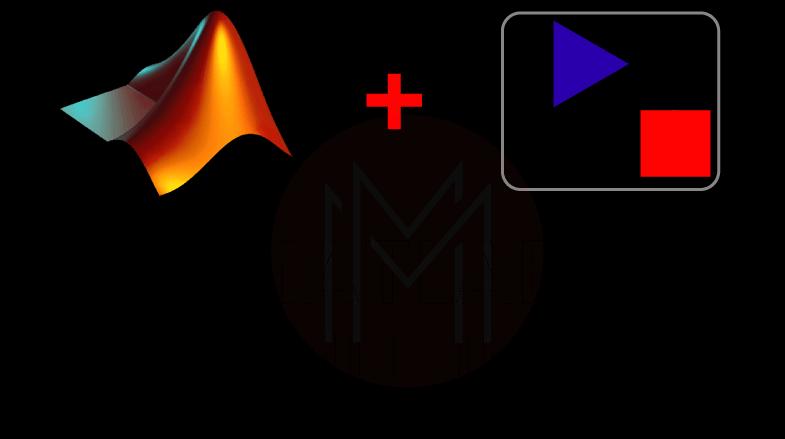- Home
- Blog
- Data Science
- MATLAB Interview Questions

- Big Data Vs Data Science Vs Data Analytics
- Data Science Interview Questions
- Top Data Science Tools
- Data Science Tutorial
- Data Science with R Interview Questions
- Overview of Data Modeling for Unstructured Data in Data Science
- What is Data Scientist?
- What is Data Visualization?
- Data Cleansing
- What is Data Science
- What is Data Analytics?
- Job Roles For A Data Science Enthusiast
- RapidMiner Tutorial - Introduction To RapidMiner
- Top 12 Data Science Resources
- Data Scientist Interview Questions
- Programming Languages For Data Science
- Data Engineer Interview Questions
- Data Visualization Interview Questions
- Toughest Courses in India
- Data Mining vs Data Science
- Data Scientist Job Description
Acronym for MATrix LABoratory, MATLAB is an open-source API and software that was developed initially for mathematical calculations, such as matrix operations and more.
However, with the latest version, this software has become capable of handling complex calculations, like engineering and scientific graphics, visualisation and analysis of data, and more. Out of all the prime features, MATLAB also has modelling and simulation.
So, if you think you can develop a fruitful career in this industry, this post covers some of the updated and latest MATLAB interview questions 2024 to help you with the preparation.
Our team curated MATLAB Interview Questions as follows:
Frequently Asked MATLAB Interview Questions
- Define MATLAB?
- What do you know about Simulink?
- What is Handle Graphics in MATLAB?
- Can MATLAB Support Multi-dimensional arrays?
- What do you know about 3D-Visualisation elements in MATLAB?
- Define memory management functions in MATLAB?
- What is the M-file in MATLAB?
- What are the basic toolboxes present in MATLAB?
MATLAB Interview Questions For Freshers
If you’re a beginner or a fresher, these MATLAB interview questions for beginners will help you prepare well.
1. Define MATLAB.
MATLAB is one of the high-performance languages that is used for numerical computing. It consolidates programming, visualisation and calculations in an easy-to-use environment where answers and problems are showcased in familiar binary notation. It comprises
- Math and computation
- Application development that contains Graphical User Interface building
- Algorithm development
- Engineering and scientific graphics
- Prototyping, simulation, and modelling
- Visualisation, exploration and data analysis

2. What do you mean by MATLAB Application Program Interface (API)?
MATLAB API is a library that lets you write C and Fortran programs that interact with MATLAB. It comprises the facilities for calling MATLAB as a computational engine, reading and writing Mat files, and calling routines from MATLAB.
3. What do you know about the MATLAB working environment?
This is the set of facilities and tools that you work with as the MATLAB programmer or client. It comprises facilities to handle the variables in the workspace and import as well as export data. Furthermore, it also has tools for debugging, profiling M-files, managing, and developing MATLAB applications.
4. What do you know about Simulink?
Simulink is MATLAB’s add-on product that offers a stimulating, interactive and graphical environment for analyzing and modelling dynamic systems.

5. How polynomials are represented in MATLAB?
In MATLAB, a polynomial is represented by a vector. To create it, you will have to enter every coefficient of the polynomial into the vector in descending order.
6. What is Handle Graphics in MATLAB?
Handle Graphics is the graphic system of MATLAB. It comprises high-level commands for two and three-dimensional data visualisation, animation, image processing and display graphics. It also has low-level commands that let you customize the graphics’ display completely and develop a comprehensive Graphical User Interface on applications.
7. What do you mean by Get and Set in MATLAB?
Get and Set are getter and setter functions in MATLAB. The getter functions are used for accessing features ,and the setter functions are used for assigning properties.
8. Can MATLAB Support Multi-dimensional arrays?
No, MATLAB cannot support multi-dimensional arrays. However, it can support the two-dimensional type of matrix.
9. How many types of Loops are provided by MATLAB?
MATLAB offers a variety of loops, such as:
- While Loop
- Nested Loop
- For Loop
10. What are the four primary functions used to solve Ordinary Differential Equations (ODE)?
The four essential functions that are used to solve ODE are:
- Quad
- ODE45
- Quad8
- ODE23
| Enthusiastic about exploring the skill set of Data Science? Then have a look at the Data Science Training Certification Course. |
MATLAB Interview Questions For Experienced
If you’re a professional and have some knowledge of MATLAB, these MATLAB interview questions for professionals will help you sharpen your existing skills.
11. What do you know about 3D-Visualisation elements in MATLAB?
The 3D-Visualization elements let MATLAB handle 3D graphics, such as:
| Surface and Mesh Plots | It comprises visualized functions, plot matrices, and colour maps |
| Volume Visualization | It is generally used for the volume data grid |
| View Control | It is used to control the viewpoint of the camera along with rotation, zooming, and aspect ratio, as well as setting axis limit |
| Transparency | It is used to specify object transparency |
| Lighting | It is used to add and control scene lighting |
12. Define memory management functions in MATLAB.
Here is the list of memory management functions in MATLAB:
| Clear | Removes variables from memory |
| Quit | Exits MATLAB and all of the allocated memory to the system |
| Pack | Saves the existing variables to the disk and reloads them continuously |
| Load | Reloads the data files stored with the save function |
| Save | Selectively persists variable to disk |
13. Define memory management functions in MATLAB.
Here is the list of memory management functions in MATLAB:
| Box | Axis Border |
| Errorbar | Plots error bars along the curve |
| Hold | Keeps the current graph and simultaneously adds a new graph |
| Line | Creates a line object |
| Line Specification (LineSpec) | Syntax of line specification string |
| Loglog | Log to the log-scale plot |
| Plot | 2-D line plot |
| Plot3Ylim | 3-D line plot |
| Plotyy | 2-D line plots with y-axis on both the right and left sides |
| Polar | Polora coordinate plot |
| Semilogx | Semilogarithmic plot |
| Semilogy | Semilogarithmic plot |
| Subplot | Creates an axis in tiled positions |
| Xlim | Queries or sets x-axis limits |
| Ylim | Queries or sets y-axis limits |
| Zlim | Queries or sets z-axis limits |
14. What is M-file in MATLAB?
M-files are plain ASCII scripts that are interpreted at run time. Basically, they are the subprograms stored in text files with a .m extensions. Furthermore, they are used for most of the development, maintainability and platform independence of MATLAB. It gets just-in-time compiled and is parsed once. However, it is transparent to customers as well.
15. How can you execute the source code on MATLAB?
By default, the code gets stored with the (.m) extension, which is anchored. However, if you need to put it away in a more anchored way, you can go with these methods:
- Influencing as P-to Code
You’ll have to convert a few significant parts of the source code files to the text darkened shape, which is known as P-code document. And then disseminate the program code in the configuration. - Gather into a Double Solution
You’ll have to compile the source code files with the help of MATLAB Compiler to create independent functions. It has to be appropriate enough for the end-user of the application.
16. What do you mean by Stress Analysis in MATLAB?
MATLAB is generally used in space environments and aerospace engineering. It is adequate for flexible dynamics. The experts in the domain carry out stress analysis on a variety of operations, such as composite and metallic structures. To evaluate the stress, PATRAN, Oracle, IDEAD, and NASTRAN levels of proficiency are needed. The functions of the metallic structure are also used on aircrafts. The stress analysis primarily comprises the understanding of control surface stiffness, finite item modeling, loop evaluation, and fatigue testing analysis and requirements.
17. Can you explain who, whos, pi, eps, and type in MATLAB?
| Who | Shows all of the variables you have defined currently |
| Whos | Shows the variables, their sizes and additional information |
| pi | Refers to a function that returns the pi equation |
| eps | Refers to a function that returns the lowest floating-point number of MATLAB |
| Type | A function name for any function in the search path of MATLAB that allows you to see how the function is written |
18. Define Numeric Precision and Pseudo-Random Binary Sequence in MATLAB.
Numeric Precision is when numeric quantities are presented as double-precision floating-point numbers. In systems, these numbers have 53 essential binary bits, which is approximately 15 or 16 decimal digits.
Pseudorandom binary sequence is a form of creating an M-file in the new Frequency Domain System Identification Toolbox for specific lengths (2^2-1 to 2^30-1). It is also known as Maximum Length Binary Sequence (mlbs).
19. Define Xmath.
Xmath is referred to as an interactive graphics and design environment for the workstations of Xwindows. Some of the key features of Xmath include:
- Scripting languages with OOP features
- A certain layer feasible enough for programming MOTIF GUI
- Libraries that are compatible with C and LNX language
- Clickable and pointed colour graphics
- Debugging tools with GUI features
20. What are the basic toolboxes present in MATLAB?
Some of the basic and standard toolboxes in MATLAB are:
- Control systems
- Wavelets
- Fuzzy logic
- System identification
- Image processing
- Symbolic math
- LMI control
- Statistics
- Neural networks
- Signal processing
- Optimization
- Robust control
- Partial differential equation
To create any of the toolboxes, you will have to:
- Visit MATLAB Start menu
- Go to Toolboxes submenu
- Choose the Toolbox you wish to use
And you are done.
Conclusion
Preparing for a MATLAB interview is a seamless process, given that you’re equipped with all of the required material. So, if you’re trying to plan an interview, this post would surely be helpful for you. Refer to all of the MATLAB interview questions mentioned above and prepare like a pro.
 On-Job Support Service
On-Job Support Service
Online Work Support for your on-job roles.

Our work-support plans provide precise options as per your project tasks. Whether you are a newbie or an experienced professional seeking assistance in completing project tasks, we are here with the following plans to meet your custom needs:
- Pay Per Hour
- Pay Per Week
- Monthly
| Name | Dates | |
|---|---|---|
| Data Science Training | Dec 20 to Jan 04 | View Details |
| Data Science Training | Dec 23 to Jan 07 | View Details |
| Data Science Training | Dec 27 to Jan 11 | View Details |
| Data Science Training | Dec 30 to Jan 14 | View Details |

Keerthi Sai is a Senior Writer at Mindmajix with tons of content creation experience in the areas of cloud computing, BI, Perl Scripting. She also creates content on Salesforce, Microstrategy, and Cobit.







